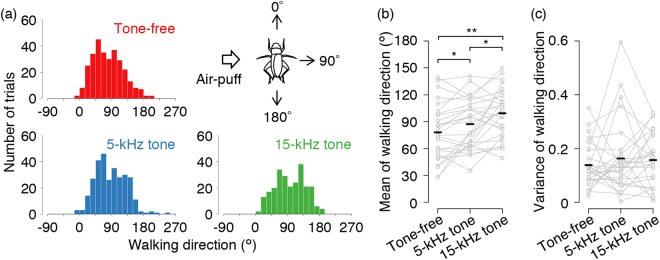Figure 3.
Auditory effects of different frequencies of tones on directionality in wind-elicited escape. (a) Histograms of walking direction for three types of stimulation in 15-degree bins (n = 299 trials for tone-free, n = 299 trials for 5-kHz tone, and n = 250 trials for 15-kHz tone). Upper right inset indicates a definition of the walking direction. Direction of walking opposite to the stimulus angle was defined as 90º, and walking forward and backward resulted in 0º and 180º, respectively. (b,c) Mean angle and circular variance of walking direction in response to three types of stimulation. (N = 27 individuals) **p < 0.01, *p < 0.05 (paired t-test followed by Holm’s correction).

